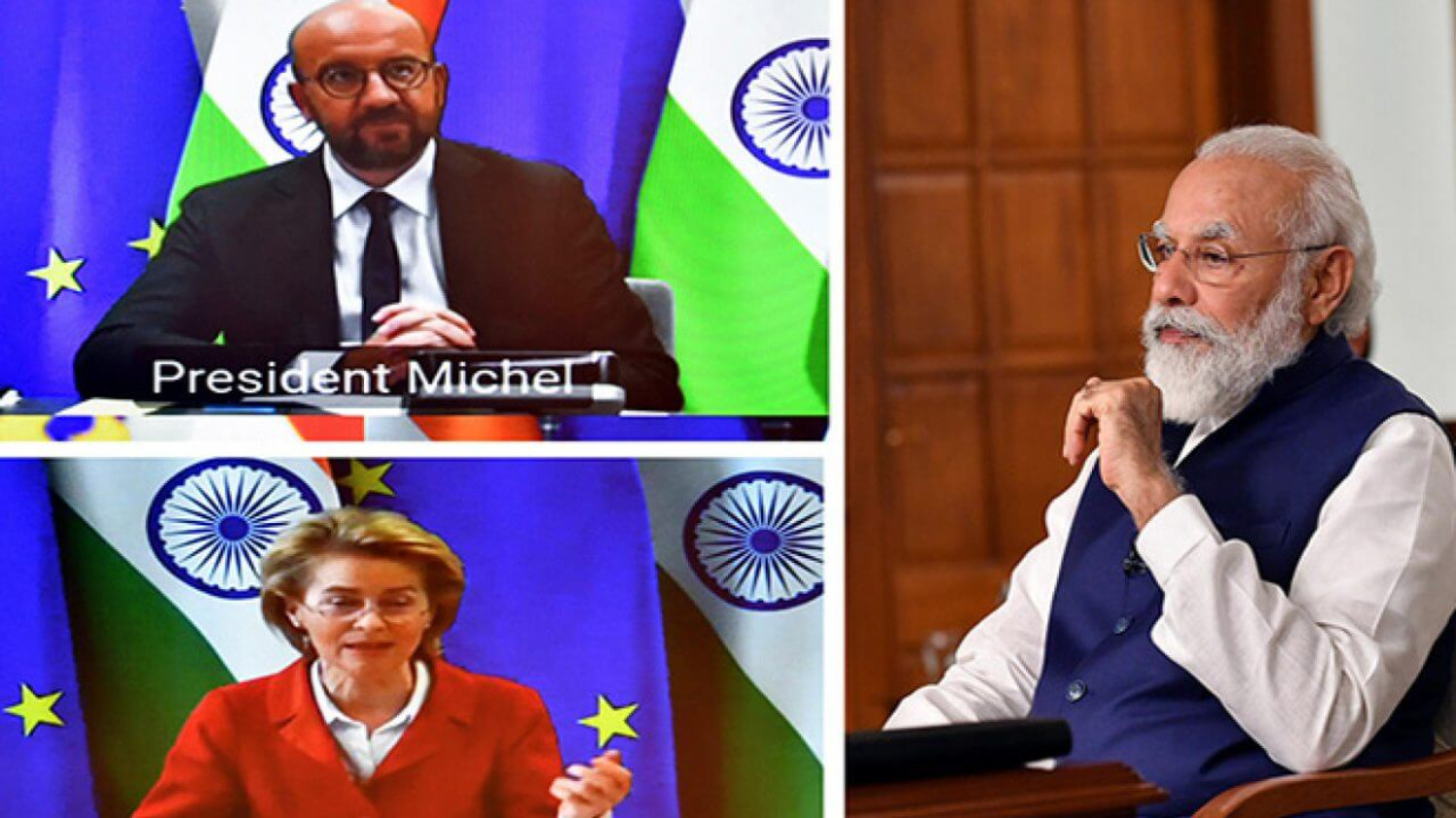Good step forward?
Resumption of India-EU BTIA is welcome but two separate agreements on trade and investment is rather complex

Serious negotiations on India-EU BTIA got suspended in 2013/14. Since then, various attempts have been made to resume these negotiations but with virtually zero success. It is in this context that one has to view the latest decision at the virtual India-EU Summit on May 8, 2021, to restart the stalled negotiations. Of course, the ground situation has changed this time with Brexit now a done deal formalising the exit of the UK from the EU. The UK, being one of India's largest trading partners within the EU, certainly changes the equation of an India-EU BTIA but this is sought to be neutralised through a separate Comprehensive FTA with the UK.
EU is the most rational choice for a comprehensive BTIA, as we are not each other's main competitors in areas of our export interests. Total merchandise trade in 2019/20 was USD 105 bn. Our principal exports to each other differ with EU's being gems and jewellery, aircraft, other machinery and instruments while India's are petroleum oil (not crude), organic chemicals, textile (apparel) shrimps and prawns and footwear. A zero for zero deal in textiles is particularly attractive for India and similar ones in machinery and speciality chemicals for the EU. In services too, we are more complementary, with India's main interests being computer and IT-related services, other business services (all part of offshoring) and movement of professionals particularly contractual service suppliers while EU's interest is more for commercial presence in banking, insurance, retail and professional services like legal and accounting
However, this should not lull both sides into any complacency, as there are several critical areas with substantial differences in approaches like sustainable development, government procurement and IPR, particularly grant of GIs to EU wines and spirits and cheese. Further, there are several market access areas like automobiles, wines and spirits and WMP/cheese where EU demands are extremely ambitious for us to meet. Similarly, tough choices confront the EU on grant of any data adequacy status to Indian IT companies both in the light of the much more stringent data privacy laws in vogue in EU and striking down of the Safe Harbour Clause between US and EU by the European Court of Justice. While the bigger Indian IT companies can meet the contractual obligations relating to data privacy, this becomes prohibitively expensive for our medium and small companies, making them uncompetitive. Therefore, some compromise in this area may still be warranted to provide unrestricted access to cross-border trade, which is now increasingly the mode of delivery of the future. Movement of personnel not linked to commercial presence, namely for categories of contractual service suppliers and independent professionals based on a contract while politically not easy, could still see some movement given EU's demographic profiles which warrant the necessity of such foreign professionals for temporary periods of time.
A bigger worry is the Sustainable Development issue without which no trade agreement can pass muster in the European Parliament, but there are very obvious constraints to what India can agree in this context. The inclusion of either ILO Conventions or Multilateral Environment Agreements is a no go area for India as is any possibility of joint consultations with civil society on both sides on such issues.
Another cause for worry seems to be the decision in the Summit of a standalone Investment Agreement and a separate trade Agreement, effectively splitting the BTIA into two unconnected wholes. This could have severe repercussions on the Services Agreement as Mode 3 of Services is Investment. This has never been attempted in any of our previous CECA or CEPA. Mode 3 commitments on market access are an integral part of the Services schedules and have clear trade-offs with other modes within the Services Agreement; separating Mode 3 services commitments in a separate Investment Schedule could reduce these possible trade-offs or leverages. Understandably, the EU is desperate to sign the Investment Agreement as the earlier bilateral BIPAs with individual member states were unilaterally terminated by India. But this is precisely our leverage too to insist on a single BTIA as has always been the mandate. Also, if the two are separated, the EU would possibly try to fast-track the Investment Agreement and even bargain hard for an early harvest, a demand which is clearly against India's interests and our previous experiences of splitting agreements has been disappointing. There has been a clear methodology for linking the Services Mode 3 part of the Agreement with the Investment Agreement in all our previous FTAs with a specific linkage article in the Investment Chapter, for example, Para 4 of Article 1 of the India-ASEAN Investment Chapter. While this protects the various rights of the foreign investor having a commercial presence in the other members' territory, the Investment Agreement does not apply to measures adopted/maintained by a party covered by the India-ASEAN Services Agreement.
Further, the schedules under the Investment Agreement are almost always negotiated on a "Negative List" basis while the services schedule of commitments has so far been negotiated on a "Positive List" basis including in the India-EU BTIA. In the case of a standalone Investment Agreement, the possibilities of the EU pressing for a Negative Listing of schedules of commitments will be high, leading to both systemic and practical problems as other modes of supply in the Services Agreement will continue to be on Positive List basis. Since India's FDI policy is based on the Negative List approach, India would find it difficult to controvert this demand. However, changing course at this penultimate stage of negotiations to a negative list would not only be time-consuming and unnecessarily complex, but it will also lead to differing legal obligations across these modes of supply and would be very confusing for finalising business deals which are normally a combination of the various modes of supply.
A separate agreement is also envisaged for Geographical Indications (GIs) which would presumably be outside the IPR Agreement, something which would be novel and its implications on a quasi-judicial process of grant of GIs under a specific GI Act is possibly unclear. Further, the EU has far more to benefit from such grant of GIs which could lead to disproportionate results given its independent character.
While there can perhaps be no better choice of FTA partner for India given the strong complementarities of interest, largely balanced trade, robust trade and investment on both sides, serious challenges are likely to be encountered for successful completion of negotiations by both sides. While this should not deter them from active engagement, some hard choices will need to be exercised at appropriate times by the political leadership of both parties. But perhaps because of such complexities, splitting up of the trade and investment parts does not appear to be advisable as an additional headache. However, the final call has to be taken by the negotiating teams with the requisite mandates.
The writer is a retired IAS officer. Views expressed are personal



